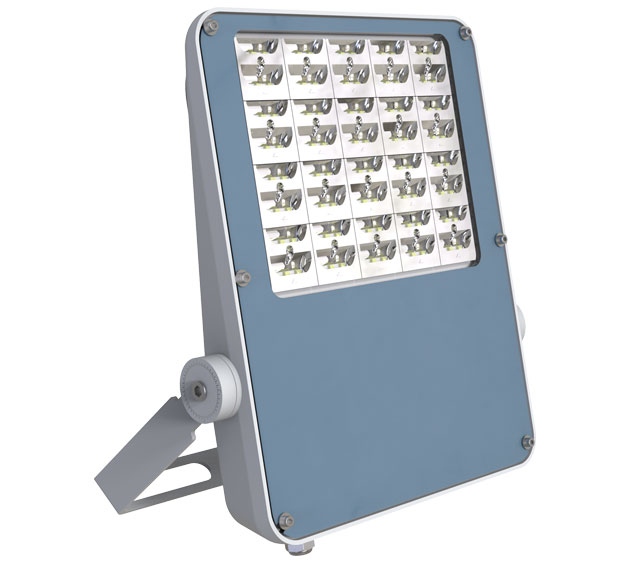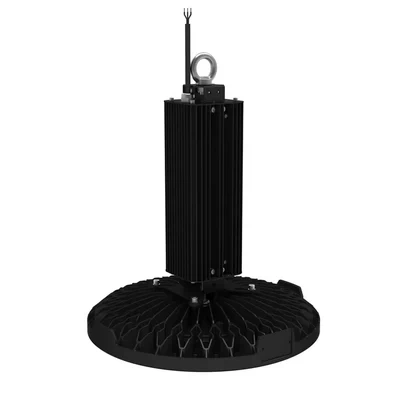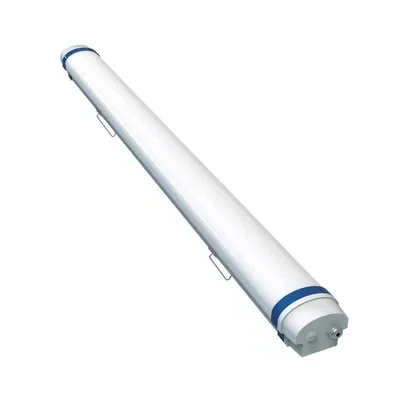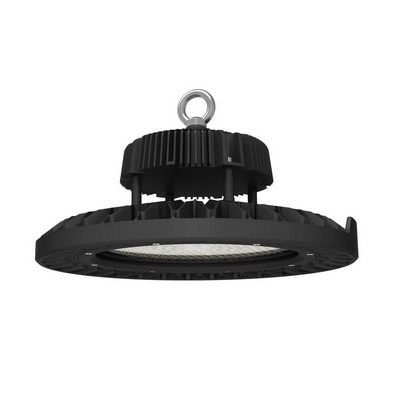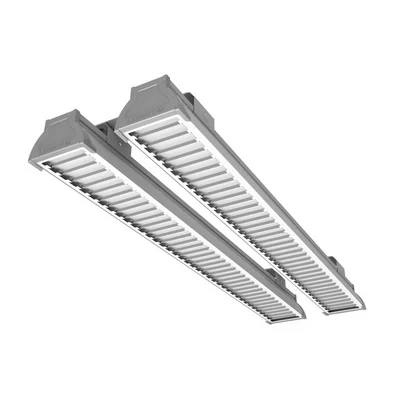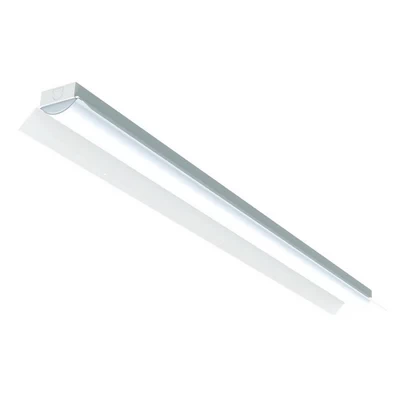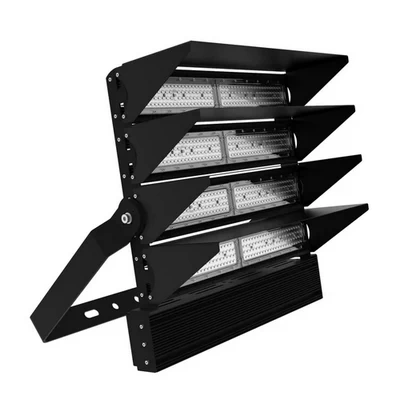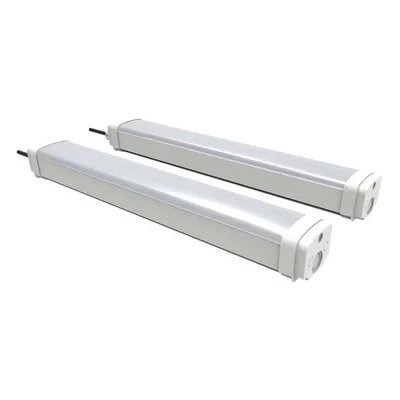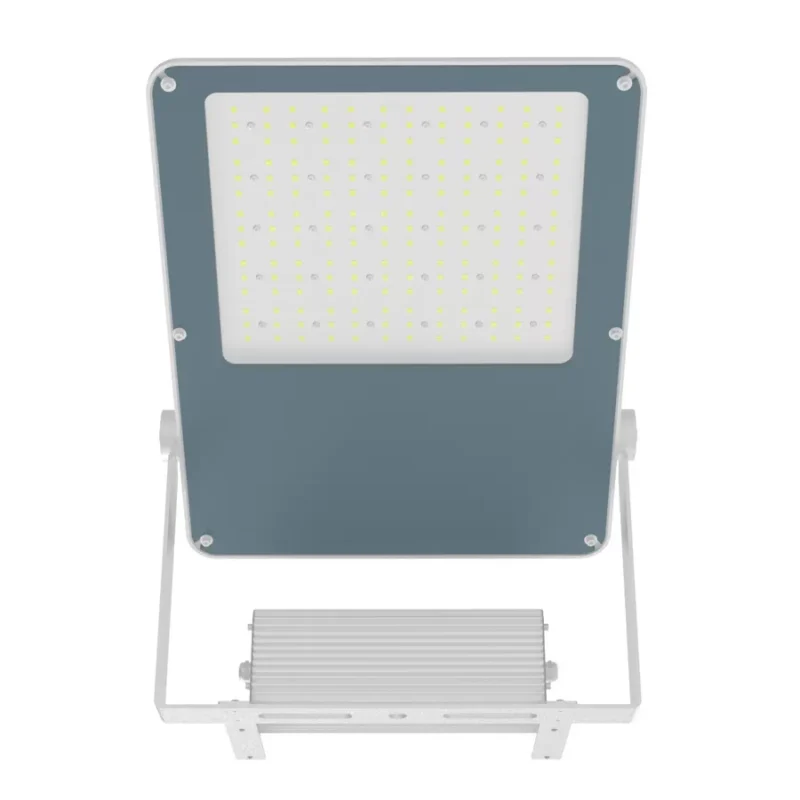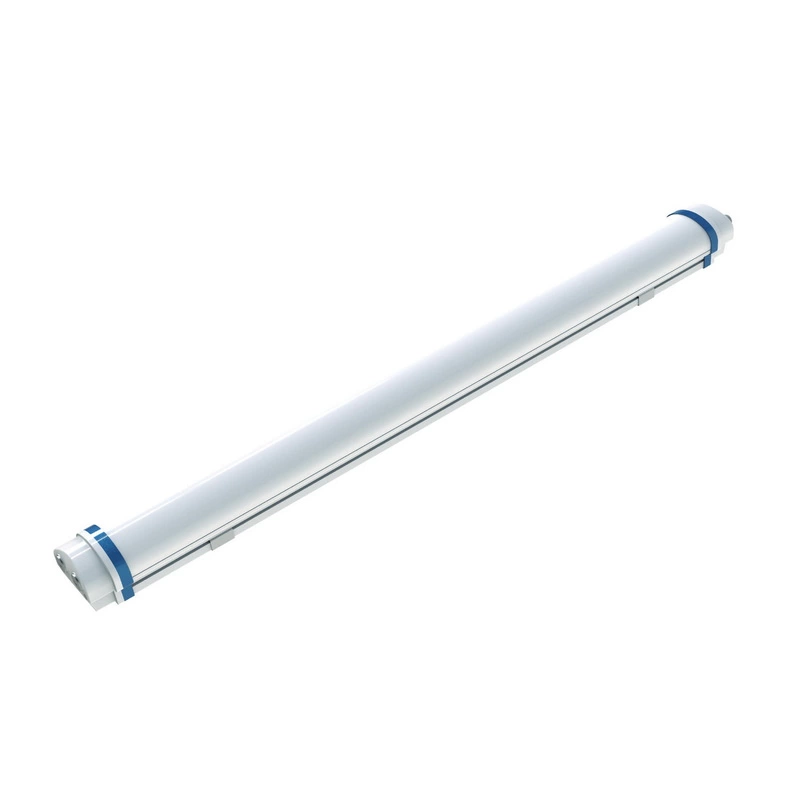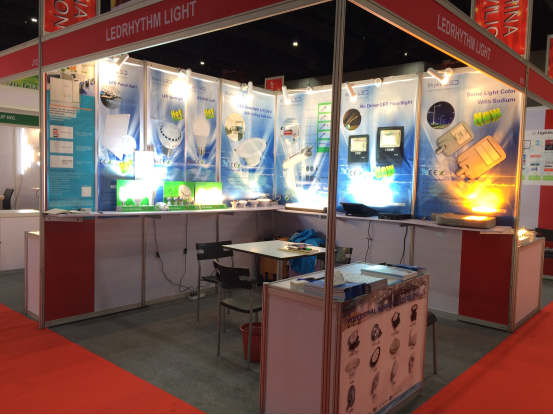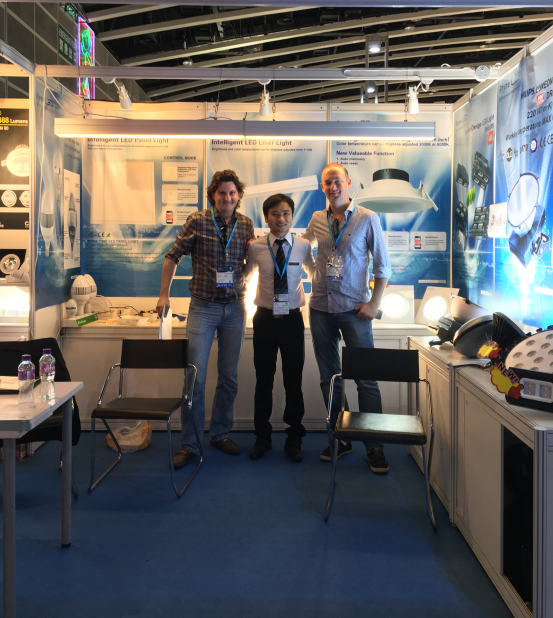اشرح تحويل الوات إلى لومن، واللومن إلى لوكس I كيف يتم تحديد سطوع الضوء
مقدمة
الفهم الإضاءة يمكن أن يكون مسعى معقدًا بسبب المصطلحات والمقاييس المختلفة المستخدمة لوصف الجوانب المختلفة للضوء. واتس, لومنو لوكس ثلاثة من هذه المصطلحات ضرورية عند التفكير في حلول الإضاءة الحديثة، خاصةً مع ظهور الصمام الثنائي الباعث للضوء التكنولوجيا. مع تحوّل الصناعة من المصابيح المتوهجة التقليدية إلى خيارات أكثر كفاءة في استهلاك الطاقة، أصبحت هذه المقاييس ذات أهمية متزايدة في اختيار المصباح المناسب للاستخدامات المختلفة، سواء أكان ذلك من أجل صالة للألعاب الرياضية بالمصنع, المرآب, في الهواء الطلق المساحات، أو مركز تسوق.
سوف تتعمق هذه المقالة في الفروق الدقيقة لهذه المصطلحات، وتشرح ما تعنيه هذه المصطلحات، وكيفية ارتباطها ببعضها البعض، وكيفية التحويل بينها. بالإضافة إلى ذلك، سنستكشف كيفية تحسين الفعالية المضيئة ومناقشة أدوار درجة حرارة اللون المترابطة (CCT), CRI (مؤشر تجسيد اللون), الصناديقو ملصقات كفاءة الطاقة في ضمان جودة الإضاءة المثلى. بحلول نهاية هذا الدليل، سيكون لديك فهم شامل لمفاهيم الإضاءة، مما يمكّنك من اتخاذ قرارات مستنيرة سواء كنت تقوم بإضاءة مركز تسوق أو اختيار الإضاءة المناسبة لـ المرآب.
ما هي واتس؟
واتس قياس كمية الطاقة الكهربائية التي يستهلكها مصدر الضوء. من الناحية التاريخية، فإن القوة الكهربائية كان مرتبطًا بالضوء الأكثر سطوعًا، خاصة في المصابيح المتوهجة. ومع ذلك، مع التقدم في تكنولوجيا الإضاءة، خاصة مع مصابيح LED, واط لم تعد تشير مباشرة إلى السطوع. على سبيل المثال، 10 وات الصمام الثنائي الباعث للضوء يمكن أن تنتج اللمبة كمية الضوء نفسها التي تنتجها اللمبة المتوهجة بقدرة 60 وات نظرًا لارتفاع الفعالية المضيئة من مصابيح LED.
ما هي اللومن؟
لومن (لومن) قياس الكمية الإجمالية للضوء المرئي المنبعث من مصدر الضوء. أصبحت لهذا المقياس أهمية متزايدة لأنه يوفر تمثيلاً أكثر دقة للسطوع من واط. في صناعة الإضاءة اليوم، عند تحويل واط إلى لومن، فأنت تحسب بشكل أساسي ناتج الضوء لاستهلاك طاقة معينة. على سبيل المثال:
-
ينتج المصباح المتوهج بقوة 60 وات عادةً حوالي 800 لومن.
-
10 واط الصمام الثنائي الباعث للضوء يمكن للمصباح أن يُنتج المصباح نفسه 800 لومنوإظهار كفاءتها.
لإضاءة المساحات الكبيرة مثل صالة للألعاب الرياضية بالمصنع أو في الهواء الطلق المساحات، واختيار الأضواء بناءً على لومن يضمن استيفاء مستويات السطوع المطلوبة.
ما هو لوكس؟
لوكس هو مقياس للإضاءة، ويمثل مقدار الضوء الذي يصل إلى منطقة معينة. واحد لوكس يساوي واحدًا التجويف لكل متر مربع. في حين أن لومن مقدار الضوء المنبعث من المصدر, لوكس يشير إلى مقدار الضوء الذي يصل بالفعل إلى سطح ما ويضيئه. وهذا مهم بشكل خاص في إعدادات مثل مراكز التسوق أو صالات الألعاب الرياضية في المصنعحيث الإضاءة المنتظمة أمر بالغ الأهمية.
على سبيل المثال
-
100 لوكس قد يكون كافيًا بالنسبة إلى الإضاءة المحيطة في المرآب.
-
500 لوكس قد تكون ضرورية للمجالات الموجهة نحو المهام في صالة للألعاب الرياضية بالمصنع أو في الهواء الطلق الإعدادات التي تتطلب إضاءة دقيقة.
الفرق بين اللومن واللكس

فهم الفرق بين لومن و لوكس من الضروري عند التخطيط للإضاءة في أماكن مثل مركز تسوق أو صالة للألعاب الرياضية بالمصنع.
-
لومينز قياس إجمالي ناتج الضوء من مصدر ما.
-
لوكس يقيس شدة الضوء على مساحة سطح معينة.
على سبيل المثال، مصدر الضوء الذي ينبعث منه 2000 لومن منتشرة على مساحة كبيرة قد يؤدي إلى انخفاض لوكس مستويات، مما يجعل المساحة تبدو معتمة. وعلى العكس، فإن تركيز تلك الـ 2000 لومن على مساحة أصغر تزيد من لوكس مستوى، مما ينتج عنه مساحة أكثر إشراقاً.
كيفية تحويل الوات إلى لومن، وأخيراً من لومن إلى لوكس؟
تحويل الواط إلى لومن يتطلب فهم الفعالية المضيئة لمصدر الضوء، والذي يختلف حسب النوع (على سبيل المثال, مصابيح LED، الفلورسنت، المتوهج، المتوهج). الصيغة العامة هي:
لومينز = واتس × الفعالية المضيئة (بوحدة لومن/ثانية)
للتحويل لومن إلى لوكس، استخدم الصيغة التالية:
لوكس = لومينز / المساحة (بالمتر المربع)
على سبيل المثال الصمام الثنائي الباعث للضوء مصدر الضوء المنبعث منه 3000 لومن في منطقة مساحتها 10 أمتار مربعة ينتج عنه:
لوكس = 3000 لومن / 10 m² = 300 لوكس
في أماكن مثل صالة للألعاب الرياضية بالمصنع أو في الهواء الطلق المناطق، مما يحقق لوكس المستويات أمر بالغ الأهمية لضمان سطوع كافٍ.
كيفية تحسين فعالية الإضاءة المضيئة؟
التحسين الفعالية المضيئة ضروري لتحسين استهلاك الطاقة وتحقيق السطوع المطلوب في مختلف التطبيقات. إليك كيفية تحسين الفعالية المضيئة في إعدادات مختلفة مثل صالات الألعاب الرياضية في المصنع, المرائب, في الهواء الطلق المساحات، و مراكز التسوق.
درجة حرارة اللون المترابطة (CCT)
CCT يقيس المظهر اللوني للضوء، ويتراوح عادةً من الدافئ (2700 كلفن) إلى البارد (6500 كلفن). أعلى CCT غالبًا ما يرتبط بارتفاع الفعالية المضيئةولكن المثالية CCT يعتمد على التطبيق:
-
صالة المصنع للألعاب الرياضية: درجات الحرارة الأكثر برودة (5000 ك - 6500 ك) مفضلة لارتفاعها الفعالية المضيئة وخصائص تعزيز التركيز
-
مركز تسوق: متوازن CCT (4000 كلفن) يضمن إضاءة ممتعة دون المساس بـ لومن.
CCT لا يؤثر فقط على شكل المساحة ومظهرها ولكن أيضًا على مدى كفاءة مصدر الضوء.
CRI (مؤشر تجسيد اللون)
CRI يقيس مدى دقة مصدر الضوء في عرض الألوان مقارنة بالضوء الطبيعي. أعلى CRI غالبًا ما تؤدي القيم إلى انخفاض الفعالية المضيئة لأن الطاقة تُستخدم لتحقيق عرض دقيق للألوان بدلاً من تحقيق أقصى قدر من السطوع. ومع ذلك، بالنسبة للمساحات مثل مراكز التسوقعالية CRI (80 أو أعلى) أمر ضروري لضمان ظهور المنتجات والعروض في أفضل حالاتها.
الصناديق
الصناديق هي الفئات المستخدمة لفرز مصابيح LED بناءً على خصائص مثل درجة حرارة اللونوالسطوع والجهد. اختيار المناسب بن يضمن الاتساق في الإضاءة، وهو أمر مهم بشكل خاص في المساحات الكبيرة مثل صالة للألعاب الرياضية بالمصنع أو مركز تسوق حيث يلزم توزيع الضوء المنتظم.
تبديد الحرارة
الكفاءة تبديد الحرارة أمر بالغ الأهمية للحفاظ على الفعالية المضيئة من مصابيح LED. في بيئات مثل في الهواء الطلق المساحات أو صالات الألعاب الرياضية في المصنع حيث تُستخدم الأضواء لفترات طويلة، فإن الأحواض والمواد المناسبة للحرارة ضرورية لمنع الصمام الثنائي الباعث للضوء التدهور والحفاظ على إخراج ضوء ثابت.
سائق الصمام الثنائي الباعث للضوء
الجودة برنامج تشغيل الصمام الثنائي الباعث للضوء يضمن حصول المصباح على مصدر طاقة ثابت، وهو أمر ضروري للحفاظ على الفعالية المضيئة ومنع حدوث مشكلات مثل الوميض أو انخفاض العمر الافتراضي. هذا مهم بشكل خاص في تطبيقات مثل صالات الألعاب الرياضية في المصنع و المرائب حيث تكون الإضاءة الموثوقة أمراً بالغ الأهمية.
توزيع الإضاءة
يؤثر تصميم التجهيزات واستخدام البصريات مثل العدسات والعاكسات على كيفية توزيع الضوء، مما يؤثر على كل من لوكس مستويات الإضاءة والسطوع المحسوس. يعد التوزيع السليم للإضاءة أمرًا ضروريًا في مراكز التسوق و في الهواء الطلق المساحات لضمان إضاءة متساوية وتجنب البقع الداكنة.
بطاقة ErP (بطاقة كفاءة الطاقة)
في الاتحاد الأوروبي، فإن ملصق ErP (توجيه المنتجات المتعلقة بالطاقة) يساعد المستهلكين على فهم كفاءة الطاقة في منتجات الإضاءة. أعلى الفعالية المضيئة عادةً ما يؤدي إلى ErP التصنيف، وهو اعتبار مهم للمساحات التجارية مثل مراكز التسوق و صالات الألعاب الرياضية في المصنع تهدف إلى تقليل استهلاك الطاقة.
من واط LED إلى لومن
مختلفة الصمام الثنائي الباعث للضوء تقدم أنواعًا مختلفة الفعالية المضيئة. على سبيل المثال:
-
أضواء الخليج العالية في صالة للألعاب الرياضية بالمصنع قد يحقق 130 لومن لكل واط.
-
مصابيح السقف في مركز تسوق يمكن أن تصل إلى 180 لومن لكل واط.
-
إنارة الشوارع في مساحة خارجية يمكن أن تصل إلى 180 لومن لكل واط.
جداول بيانات لإعدادات مختلفة
لفهم أفضل لكيفية CCT, CRI, الصناديقو ملصقات كفاءة الطاقة التأثير على البيئات المختلفة، انظر إلى جداول البيانات التالية:
إضاءة الصالة الرياضية في المصنع
|
العامل |
القيمة المفضلة |
السبب |
|
CCT |
5000 ك - 6500 ك |
يعزز التركيز والرؤية أثناء ممارسة الأنشطة البدنية. |
|
CRI |
70-80 |
كافية لإضاءة المهام حيث تكون دقة الألوان أقل أهمية. |
|
الفعالية المضيئة |
130 لومن لكل واط |
يضمن لك إضاءة ساطعة وفعّالة في المساحات الكبيرة. |
|
كفاءة الطاقة |
A++ |
يقلل من التكاليف التشغيلية ويحقق أهداف الاستدامة. |
إضاءة المرآب
العوامل الرئيسية في شدة إضاءة LED و قياس السطوع
ما الذي يحدد سطوع الضوء?
يتم تحديد سطوع مصدر الإضاءة من خلال عدة عوامل، بما في ذلك نوع المصباح والقوة الكهربائية والكفاءة. مصابيح LED، على وجه الخصوص، معروفة بكفاءتها العالية وسطوعها العالي، مما يوفر المزيد من لومن لكل واط مقارنةً بالمصابيح المتوهجة أو الفلورسنت التقليدية.
-
لومن مقابل وات: في تقنيات الإضاءة القديمة, القوة الكهربائية غالبًا ما يُستخدم كمؤشر للسطوع. ومع ذلك، مع إضاءة LED, لومن مقياسًا أفضل، حيث إن مصابيح LED تنتج إضاءة أكثر بكثير لكل واط من المصابيح المتوهجة.
القياس مستويات إضاءة LED
عند التثبيت إضاءة LED في المصانع أو المساحات التجارية، وقياس مدى ملاءمة مستويات إضاءة LED هو المفتاح لتحقيق السطوع المناسب. أدوات مثل عدادات لوكس في قياس كمية الضوء في لوكس والتأكد من توزيع الإضاءة بالتساوي.
-
مقياس سطوع ضوء LED: الـ مقياس السطوع لـ مصابيح LED غالبًا ما يُعبَّر عنها بدلالة لومن و لوكس. إنتاجية عالية مصابيح LED يمكن أن تنتج الآلاف من لومن من الضوء مع الحفاظ على كفاءة الطاقة، مما يجعلها مثالية للمساحات الكبيرة مثل الملاعب أو مرافق الموانئ.
مخطط لوكس مقابل لومينز: تصور كثافة الضوء
لفهم العلاقة بين لوكس, لومنووحدات أخرى من الضوء، دعونا نفحص مخطط لوكس مقابل لومن. يقدم هذا الرسم البياني تمثيلًا مرئيًا لكيفية اختلاف مستويات لومن تُترجم إلى لوكس لمساحات مختلفة.
رسم بياني: مقارنة لوكس ولومينز عبر التطبيقات
| التطبيق | الإضاءة المطلوبة | مستوى لوكس |
|---|---|---|
| المكتب | 1000-2000 لومن | 300-500 لوكس |
| إضاءة الملاعب | 50,000 إلى 100,000 لومن | 1000-3000 ل إكس |
| إضاءة المستودعات | 5000-10,000 لومن | 200-300 لوكس |
| موقف سيارات خارجي | 2000-5000 لومن | 100-150 لوكس |
يوضح هذا الرسم البياني ما يلي لوكس ولومن ترتبطان ارتباطاً وثيقاً، حيث يضمن التوازن الصحيح إضاءة المساحات بشكل جيد دون استهلاك مفرط للطاقة.
اختيار المناسب حلول إضاءة LED للتطبيقات الصناعية
لماذا تختار إضاءة LED لوكس?
إضاءة LED أصبح الخيار المفضل للاستخدامات الصناعية والتجارية نظرًا لتفوقه في ناتج التجويف وكفاءة الطاقة. في التطبيقات التي يكون فيها السطوع والتغطية أمرًا بالغ الأهمية، مثل الملاعب أو المستودعات الكبيرة, مصابيح LED توفر العديد من المزايا مقارنة بأنظمة الإضاءة التقليدية.
-
لوكس في الإضاءة: في بيئات مثل الموانئ أو المصانع الكبيرة، فإن الحفاظ على مستويات اللوكس ضروري لضمان السلامة والإنتاجية. مصابيح LED توفر سطوعًا ثابتًا عبر مساحات واسعة، مما يجعلها مثالية لمثل هذه التطبيقات.
-
لومن مقابل لوكس مقابل كانديلا: غالبًا ما تظهر هذه القياسات الثلاثة في المناقشات حول الإضاءة الصناعية. وفي حين أن لومن قياس ناتج الضوء الكلي و لوكس يقيس الإضاءة, كانديلا تقيس شدة الضوء في اتجاه معين، مما يجعلها مفيدة للإضاءة الموضعية أو المركزة في المساحات الخارجية.
لومن LED لكل واط: تعظيم الكفاءة القصوى
أحد المقاييس الرئيسية عند اختيار إضاءة LED للمساحات الصناعية هو لومن لكل واط النسبة. تساعد هذه النسبة في تحديد مدى كفاءة الضوء في تحويل الطاقة إلى ضوء مرئي. على سبيل المثال ضوء LED مع ارتفاع لومن لكل واط ستوفر النسبة مزيدًا من الضوء مع استهلاك طاقة أقل، وهو أمر بالغ الأهمية في التطبيقات الصناعية واسعة النطاق حيث يمكن أن تكون تكاليف الطاقة كبيرة.
اتخاذ قرارات الإضاءة المستنيرة-
في الختام، فإن فهم العلاقة بين لوكس, لومن, واطومصطلحات الإضاءة الأخرى أمر بالغ الأهمية لاتخاذ قرارات مستنيرة بشأن حلول الإضاءة الصناعية والتجارية. سواءً كنت تقوم بإضاءة مصنع أو ميناء أو ملعب أو مساحة تجارية، فإن ضمان التوازن الصحيح بين لوكس و لومن ستساعدك على تحقيق السطوع الأمثل وكفاءة الطاقة والأمان.
عن طريق اختيار إضاءة LED الحلول التي توفر المستوى المناسب من الإضاءة، يمكنك تحسين الرؤية والإنتاجية والسلامة في أي بيئة صناعية أو تجارية.
مصابيح LED عالية الإيقاع LedRhythm عالية التجويف لتحقيق أقصى قدر من الكفاءة
إيقاع أضواء LED عرض مختلف الفعالية المضيئة مستويات، مما يجعلها مناسبة لمختلف التطبيقات:
-
ماسة الإضاءة الداخلية الصناعية العالية الداخلية II: 150 لومن لكل واط - مثالية لـ صالة للألعاب الرياضية بالمصنع الإضاءة حيث تكون كفاءة الطاقة أمرًا بالغ الأهمية
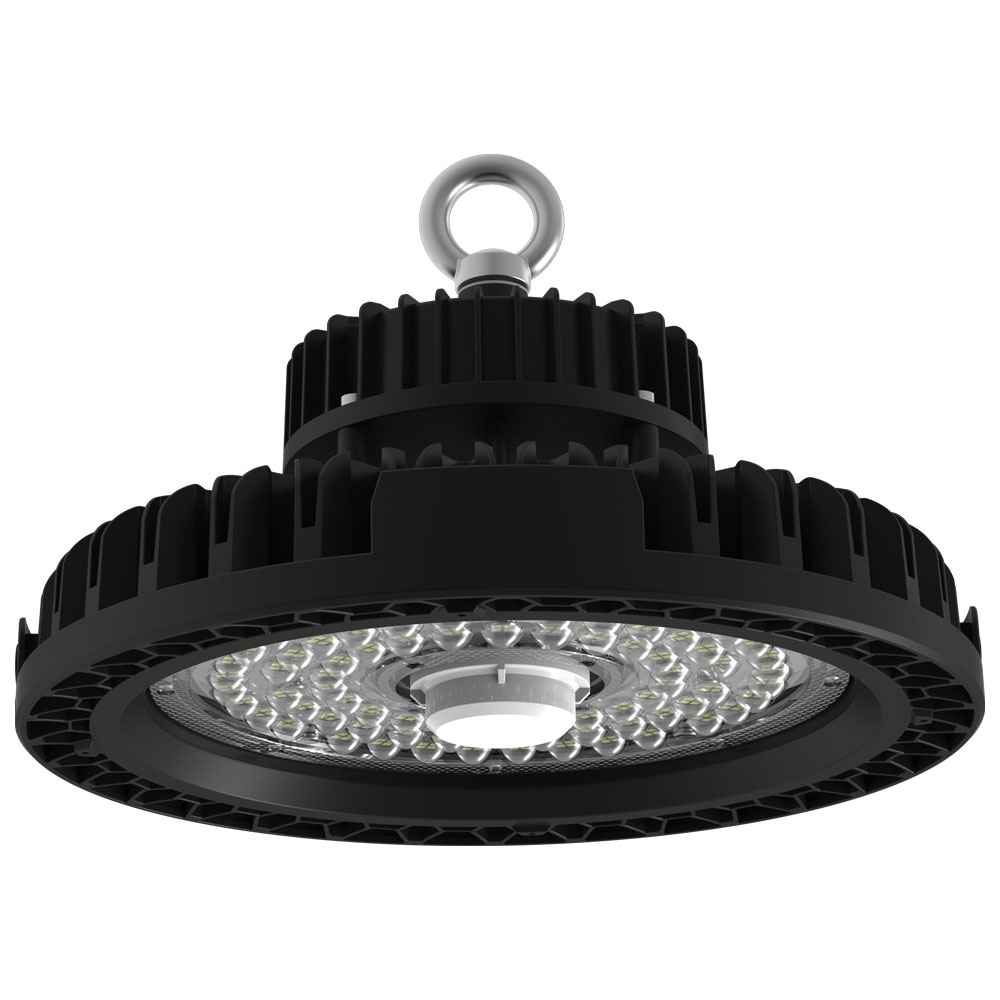
-
إندوص الصناعية الأضواء الخطية السقف الخطي I: 180 لومن لكل واط - مناسبة لـ مراكز التسوق حيث يكون كل من السطوع وتوفير الطاقة من الأولويات

-
إضاءة الشوارع الخارجية سليم III: 160 لومن لكل واط - ضوء الشارع مناسبة لـ في الهواء الطلق حيث يكون كل من السطوع وتوفير الطاقة من الأولويات
باختيار مصابيح LED عالية الإضاءة من LedRhythm ذات الإضاءة العالية، يمكن للصناعات ضمان ظروف الإضاءة المناسبة، والحفاظ على معايير السلامة، وتقليل تكاليف الطاقة.


